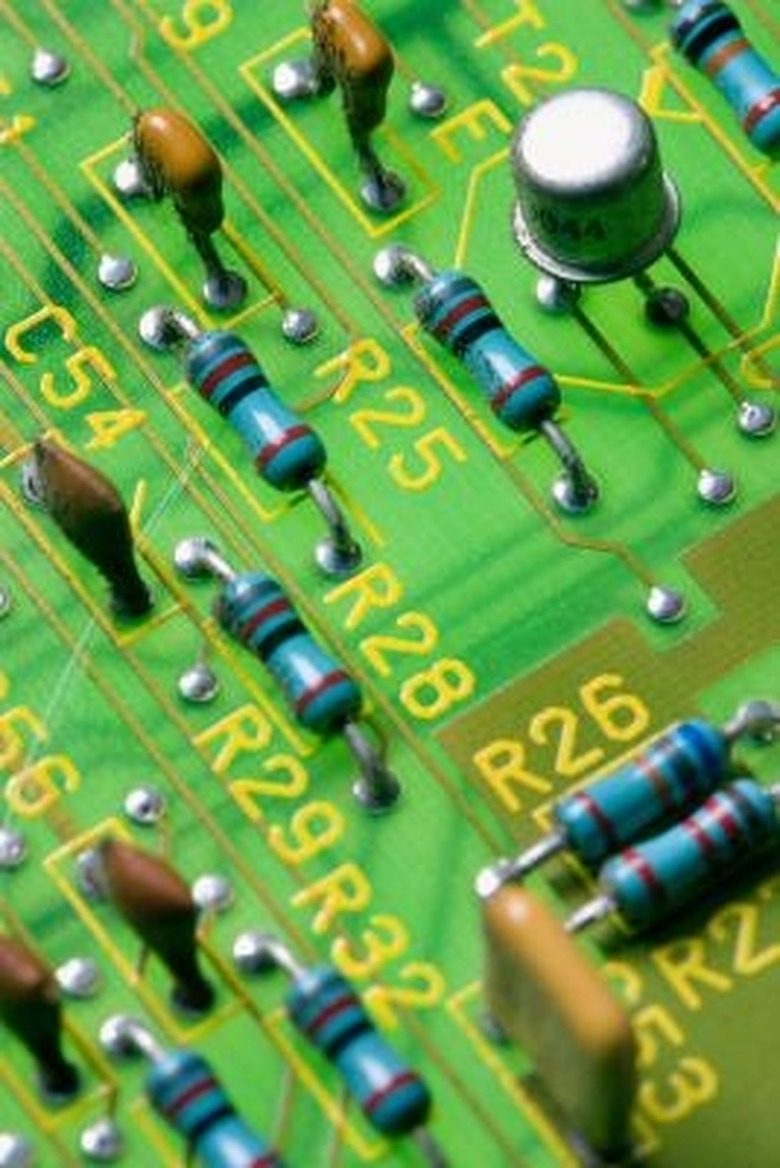Differences & Similarities Between A Series Circuit & A Parallel Circuit
Electricity is created when negatively charged particles, called electrons, move from one atom to another. In a series circuit, there is just a single path along which electrons can flow, so a break anywhere along the path interrupts the flow of electricity in the entire circuit. In a parallel circuit, there are two or more branches, creating separate pathways along which electrons can flow, so a break in one branch does not affect the flow of electricity in the others.
Current
Current
In a series circuit, the current anywhere in the circuit is defined by the most important and basic law of electricity, known as Ohm's Law. Ohm's Law states that I = V/R, where I represents electrical current, V represents the voltage supplied by the source and R represents the total resistance — opposition to the flow of electric current — of the circuit. In a parallel circuit, the current in each branch of the circuit is inversely proportional to the resistance of each branch, and the total current is equal to the sum of the currents in each branch.
Voltage
Voltage
In a series circuit, the potential difference, or voltage — the force that "pushes" the electrons around — decreases across each component in the circuit. The voltage drop across each component is proportional to its resistance, such that the sum of the voltage drops is equal to the total voltage supplied by the source. In a parallel circuit, each component effectively connects the same two points of the circuit, so the voltage each component is the same.
Resistance
Resistance
In a series circuit, the total resistance is simply the sum of the resistances of the components connected to the circuit. In a parallel circuit, the fact that current can flow along more than one pathway means that the total overall resistance is lower than the resistance of any single component. The total overall resistance, Rt, can be calculated from the equation Rt = R1 + R2 + R3 ... Rn, where R1, R2, R3 and so on are the resistances of the individual components.
Similarities
Similarities
Aside from the fact that they are both used to connect electrical components, such as diodes, resistors, switches and so on, together, there are few similarities between serial and parallel circuits. Series circuits are designed so that the current through each component is the same, whereas parallel circuits are designed so that the voltage through each component is the same.
References
Cite This Article
MLA
Dunning, David. "Differences & Similarities Between A Series Circuit & A Parallel Circuit" sciencing.com, https://www.sciencing.com/differences-series-circuit-parallel-circuit-8473011/. 24 April 2017.
APA
Dunning, David. (2017, April 24). Differences & Similarities Between A Series Circuit & A Parallel Circuit. sciencing.com. Retrieved from https://www.sciencing.com/differences-series-circuit-parallel-circuit-8473011/
Chicago
Dunning, David. Differences & Similarities Between A Series Circuit & A Parallel Circuit last modified March 24, 2022. https://www.sciencing.com/differences-series-circuit-parallel-circuit-8473011/
